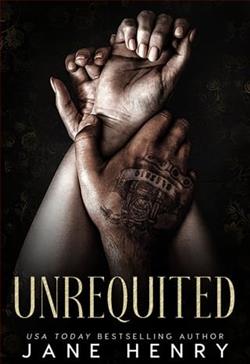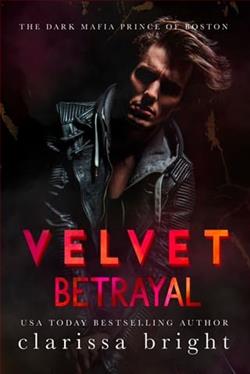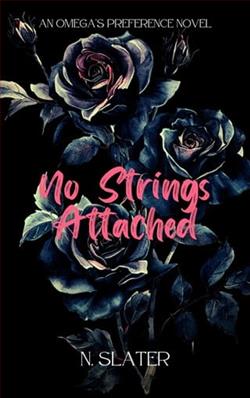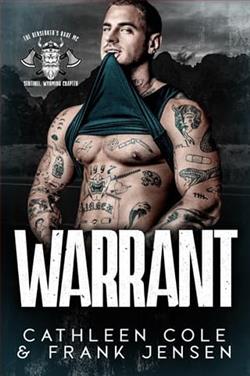Page 6 of Close Up
“If you’re right you’ve given me the lead I’ve been looking for. I’ll get my people out on the street first thing this morning to start talking to camera shops.”
“Expensive camera shops. The kind that sell professional equipment and the best film.”
“Got it. Anything else?”
“One thing,” Vivian said. “Whatever you do, please keep my name out of this. Photographers, especially those who shoot murders and fires, don’t get much respect from the art world.”
Archer snorted. “I get it, believe me. Same goes for cops. People call us when they get robbed but no one sends us engraved invitations to the big charity ball.”
“Thank you, Detective,” Vivian said. “I appreciate it.”
“Don’t worry,” Archer said. “Your secret is safe with me.”
Chapter 3
Vivian did not sleep late. She got up early, bathed, dressed, and rushed out the front door and down the street to the newsstand. Screaming headlines announced the Carstairs murder. Her picture was on the front page of theAdelina Beach Courier.
She grabbed copies of every morning paper the vendor stocked. Arms full, she hurried back to her house, brewed some strong coffee, and started reading.
All of the morning papers carried photos and lurid accounts of the newest Dagger Killer murder. The papers that considered themselves to be family papers were careful to paint out all traces of blood and ran the images of the body on page two. Others, such asHollywood Whispersand theAdelina Beach Courier,slapped the most graphic pictures on the front page.
She read all of the articles carefully, curious to see if any of the reporters had discovered that Ripley Fleming had arrived at the scene of the murder.
By the time she finished her coffee it was clear that Fleming hadescaped relatively unscathed.Hollywood Whispersand a few of the other movie gossip papers reminded readers that he and Carstairs were rumored to have been intimately involved but that was no more than what had already been printed.
Talk of a romantic connection between an actor and an actress was an excellent way to keep their names and photos in the press. A picture of the shocked lover arriving at the scene of the murder, however, would have invited a very different kind of speculation.
The phone rang, startling her. She glanced at her watch. It was almost nine. Her heart sank. Her ten o’clock portrait client was probably calling to cancel. She got to her feet and went into the living room to pick up the receiver.
“Hello.” She kept her voice cool and businesslike.
“I’m calling for Miss Vivian Brazier.”
The voice on the other end was female, brisk, and professional. The client’s secretary, most likely.
“This is Vivian Brazier,” Vivian said.
“I’m calling from the Penfield Gallery. Miss Penfield had an appointment with an artist to review some of his paintings at one o’clock today. However, that meeting has been canceled. I do realize this is very short notice but, if you’re still interested in showing some of your pictures to Miss Penfield, she will be willing to take a look at them at one o’clock.”
Vivian’s mood soared skyward with near-miraculous speed. Excitement and hope sparked. Shortly after moving to Adelina Beach she had managed to place two of her limited-edition art photos with a local gallery. The pictures, both landscapes, had been exhibited in a show and had sold for modest prices. But afterward her career had stalled. She had not been able to get any more of her photographs into the local galleries.
“Yes, of course, I’ll be happy to show Miss Penfield some of my recent work today,” she said. “I’ll be there at one.”
She hung up and went into her bedroom, opened the door of hercloset, and contemplated her wardrobe. She had several smart suits that she had brought with her when she had moved from San Francisco to Adelina Beach but they had been designed to be worn to charity luncheons and garden club teas. They required gloves, hats, and handbags that matched the shoes—not at all the sort of thing an up-and-coming photographer wore to a fashionable gallery.
She pushed the suits to the back of her closet, where they were lost in the shadows along with a couple of dramatic evening gowns. She had not worn any of them since her arrival in Adelina Beach. The clothes belonged to her other life, the life she had lived as the eldest daughter of the fashionable, socially connected San Francisco Braziers. That life had gone down in flames following the scandalous liaison with an artist and then her subsequent refusal to marry the man her parents had handpicked for her.
It had been almost a year since she had sat down with her family and announced her decision to pursue a career as an art photographer.
The news had landed with the force of a grenade in the Brazier household, although she was at a loss to understand why. It should have been obvious that she was passionate about taking pictures. She had been an avid photographer since her father had given her a Brownie on her eighth birthday. She’d moved on to her first view camera and set up her first darkroom at the age of twelve. She had been enthralled by the magic she could create in the dark.
But the scene in the elegantly appointed living room of the Brazier home on the night of her announcement still rang in her ears. “But, dear, photography is just a hobby,” her mother had said. “There’s no reason you can’t continue to do it after you’re married. I’m sure Hamilton won’t mind.”
At that point Vivian had pulled the pin out of another grenade. She had informed her parents that she had turned down Hamilton Merrick’s offer of marriage. Her mother had been first horrified and then distraught and, finally, furious.
Her father had warned her that if she continued with her crazed plan to become a professional photographer he would cut off all financial support until she came to her senses.
Her sister, Lyra, had watched the drama in silence, a speculative expression in her eyes.















